North Vietnam, Opening of the National Assembly, July 7th, 1960, Michel Nr. 136; A single stamp with a nominal of 12 xu (the standard domestic letter rate at the time) was issued, however it was produced in two distinct print runs. The first one, which is more common, comes in the colors of olive-grey/ocre and the second printing, which is quite a bit scarcer, shows black/olive-brown. Here is the official Xunhasaba stamp bulletin that was released upon issuance of the stamps. Below the bulletin is a pair of the mint stamps. The left one is the olive-grey/ochre first printing. The right one is the black/olove-brown second printing. 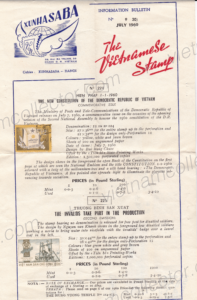
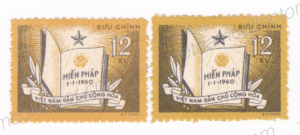 The different printings can also be differentiated by looking at the color covering of the selvage. In the first printing the ochre covers a fairly wide part of the selvage (left stamp) while in the second printing the olive-brown only covers a very narrow part of the selvage (right stamp)
The different printings can also be differentiated by looking at the color covering of the selvage. In the first printing the ochre covers a fairly wide part of the selvage (left stamp) while in the second printing the olive-brown only covers a very narrow part of the selvage (right stamp)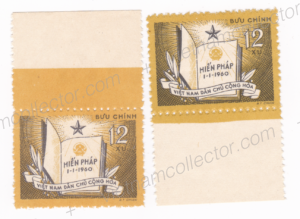 Both color variations postally used. Postally used stamps are at least ten times rarer than cancelled to order stamps.
Both color variations postally used. Postally used stamps are at least ten times rarer than cancelled to order stamps.
The production of official service stamps, which showed an additional text “Su Vu” on the face of the stamps and that were supposed to be used by Government offices, was halted in 1959 and Government offices had to use regular postage stamps from then on. However, it appears that some offices had a hard time to let go of the special stamps and hence applied a manual “Su Vu” by use of a typewriter. The addition may also have been made to dissuade theft of postage stamps. Here is a sample of this un-authorized overprint on a postally use sample of the stamp.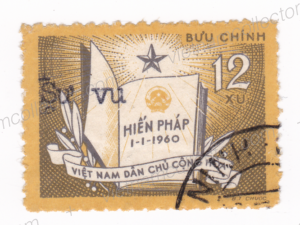
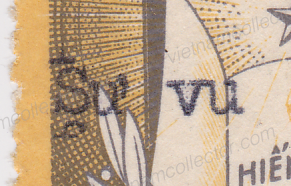 Perforation errors do occur. Here is a specimen of the first printing that is im-perforated on the left selvage.
Perforation errors do occur. Here is a specimen of the first printing that is im-perforated on the left selvage.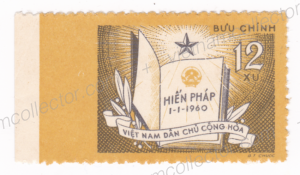 This is the same error as above but this time postally used in Hanoi.
This is the same error as above but this time postally used in Hanoi.  According to the Vietnamese Postage Stamp Catalogue this stamp was not produced imperforate, however a very small number of im-perforated stamps have appeared in the market. Here is one of them from the first printing:
According to the Vietnamese Postage Stamp Catalogue this stamp was not produced imperforate, however a very small number of im-perforated stamps have appeared in the market. Here is one of them from the first printing: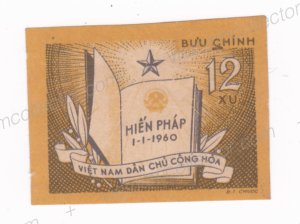 Rare single franking using a single 12xu stamp on an air mail letter in August of 1960 sent to East Germany.
Rare single franking using a single 12xu stamp on an air mail letter in August of 1960 sent to East Germany.  Another, rare single franking of the 12xu stamp on a letter sent in August of 1960 from Nam Dinh to Czechoslovakia. Machine transit cancel Hanoi on the reverse.
Another, rare single franking of the 12xu stamp on a letter sent in August of 1960 from Nam Dinh to Czechoslovakia. Machine transit cancel Hanoi on the reverse. 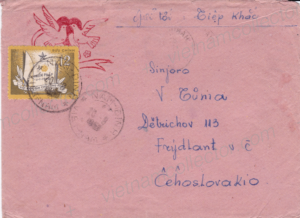 Letters with this stamp are quite rare. Here is an unusual example that comes from the Klewitz collection. It features corner/selvage specimens of both color variations. It was mailed a full decade after the stamps were issued. The overall franking of the letter, that was sent registered and via Express Mail, was 150 xu or 1.5 Dong.
Letters with this stamp are quite rare. Here is an unusual example that comes from the Klewitz collection. It features corner/selvage specimens of both color variations. It was mailed a full decade after the stamps were issued. The overall franking of the letter, that was sent registered and via Express Mail, was 150 xu or 1.5 Dong. 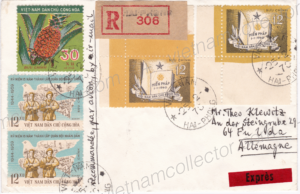 Mixed currency franking of three National Assembly stamp plus two 5D Tran Dang stamps on a Xunhasaba bulletin mailing. The old 5D stamps had been devalued by 1,000:1 on March 1st, 1960 so they were only worth 1xu. The overall postage hence amounted to 37xu.
Mixed currency franking of three National Assembly stamp plus two 5D Tran Dang stamps on a Xunhasaba bulletin mailing. The old 5D stamps had been devalued by 1,000:1 on March 1st, 1960 so they were only worth 1xu. The overall postage hence amounted to 37xu. 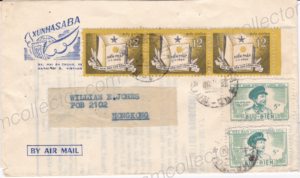 International letter franked with one 1959 Free Frank (First Printing) and one National Assembly stamp (12xu) sent to Klewitz in July of 1960. While Fulda was clearly in West Germany the sender indicated that it was located in “East Germany”confusing the postal clerk in Vietnam which qualified the letter for a 12xu tariff (West Germany would have cost a base rate of 50xu). Free Franks were not valid for international mail so either the Free Frank was simply cancelled as a favor or the letter was of the second weight level and hence two 12xu stamps were required.
International letter franked with one 1959 Free Frank (First Printing) and one National Assembly stamp (12xu) sent to Klewitz in July of 1960. While Fulda was clearly in West Germany the sender indicated that it was located in “East Germany”confusing the postal clerk in Vietnam which qualified the letter for a 12xu tariff (West Germany would have cost a base rate of 50xu). Free Franks were not valid for international mail so either the Free Frank was simply cancelled as a favor or the letter was of the second weight level and hence two 12xu stamps were required. 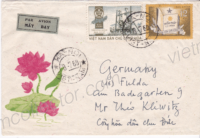
Another very rare registered express mail letter sent to Klewitz in October of 1977. The letter carries the remainder of the perforated stamps of the set plus an im-perforated stamp from the dragon fly set. There is also one of the National Assembly stamps. Im-perforated stamps on postally used cover are very rare. The overall postage amounted to 4.18 Dong. Fulda arrival cancel on the reverse. Fulda green customs cachet on front. 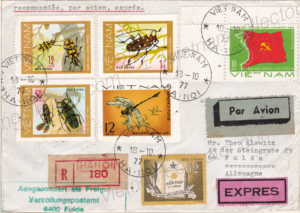
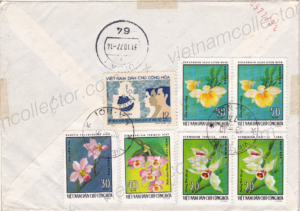 Similar mixed currency franking on a registered letter sent by the Czechoslovakian Embassy to a company in Czechoslovakia. Th letter carries the 500D October Revolution stamp that had been devalued by 1,000:1 on March 1st, 1959 so was only worth 50xu at the time of mailing. Together with the other stamps (including the 12xu National Assembly stamp) the overall postage amounted to 72xu. That amounted to the correct tariff (12xu postage plus 60xu registration fee).
Similar mixed currency franking on a registered letter sent by the Czechoslovakian Embassy to a company in Czechoslovakia. Th letter carries the 500D October Revolution stamp that had been devalued by 1,000:1 on March 1st, 1959 so was only worth 50xu at the time of mailing. Together with the other stamps (including the 12xu National Assembly stamp) the overall postage amounted to 72xu. That amounted to the correct tariff (12xu postage plus 60xu registration fee). 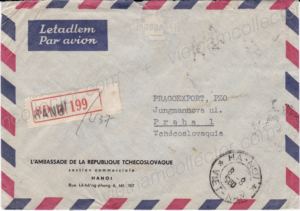
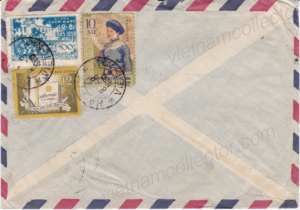 Registration Nr. 100410
Registration Nr. 100410

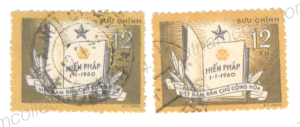
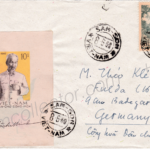
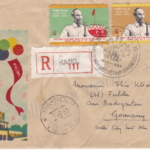
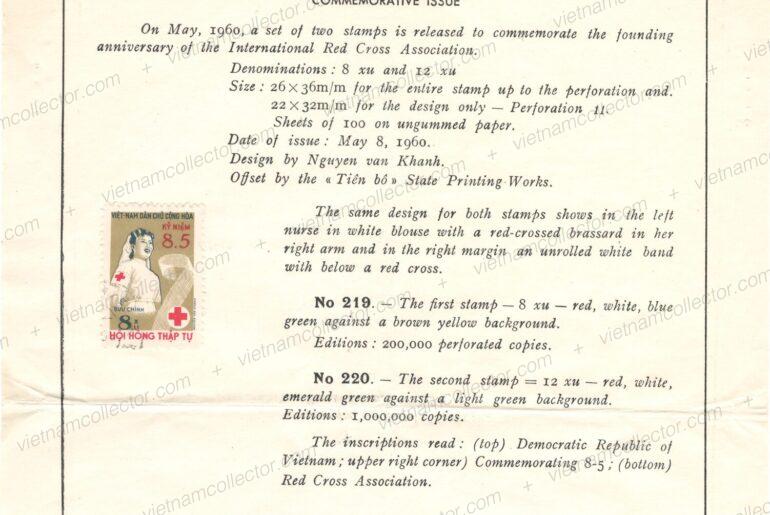
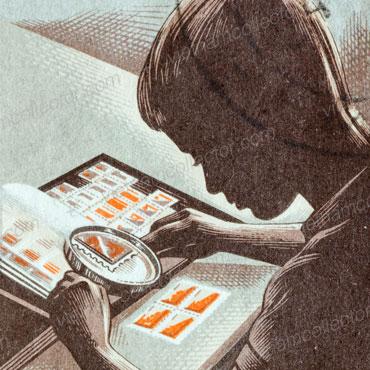
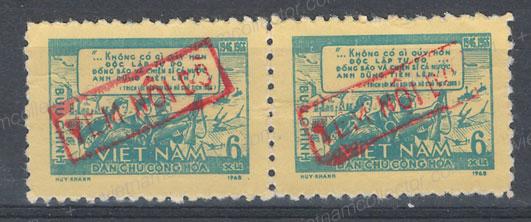
Comments are closed.